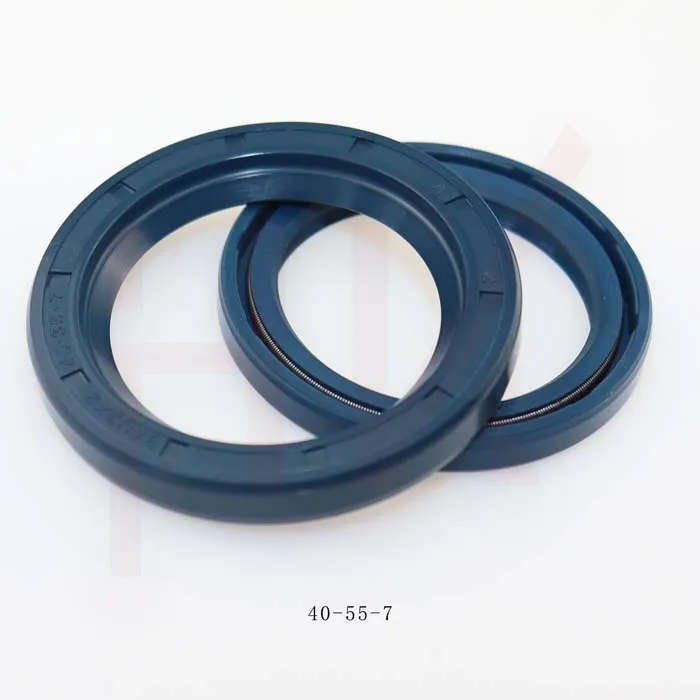9 月 . 09, 2024 12:51 Back to list
hydraulic press oil seal
Understanding Hydraulic Press Oil Seals
Hydraulic presses are essential machines widely used in various industries, including manufacturing, automotive, and construction. They operate on the principle of Pascal's law, utilizing hydraulic fluid to exert force. One critical component that ensures the efficient functioning of hydraulic presses is the oil seal. This article will explore the significance of hydraulic press oil seals, their types, applications, and maintenance tips.
What is an Oil Seal?
An oil seal is a mechanical component designed to prevent the leakage of hydraulic fluid and the entry of contaminants into the hydraulic system. It acts as a barrier, ensuring that the hydraulic fluid remains contained within the cylinder while preventing dust, dirt, and other external elements from affecting the system's performance.
Importance of Oil Seals in Hydraulic Presses
The hydraulic system in a press relies on the pressurized fluid to function effectively. Any leakage can result in a drop in pressure, leading to decreased performance or even complete failure of the machine. Oil seals play a vital role in maintaining the integrity of this system by
1. Preventing Fluid Leakage Oil seals ensure that hydraulic fluid remains within the system, providing the necessary pressure for the press to operate efficiently.
2. Contaminant Protection These seals act as a protective barrier, keeping dirt and debris away from critical components of the hydraulic system, which can prolong the life of the machine.
Types of Hydraulic Oil Seals
Hydraulic oil seals come in various materials and designs, each tailored to specific applications and environments. The most common types include
hydraulic press oil seal

1. Nitrile Rubber Seals Known for their excellent resistance to oil and hydraulic fluids, these seals are suitable for general-purpose applications.
2. Viton Seals These seals offer superior resistance to high temperatures and aggressive chemicals, making them ideal for harsh conditions.
3. PTFE Seals Polytetrafluoroethylene seals are known for their low friction characteristics and long lifespan, making them excellent for high-speed operations.
4. Composite Seals These seals combine materials to provide enhanced performance, making them suitable for specialized applications.
Maintenance of Hydraulic Oil Seals
Proper maintenance of oil seals is crucial for the longevity of hydraulic presses. Here are some tips to consider
1. Regular Inspections Periodically check seals for signs of wear, cracks, or deformities. Early detection can prevent significant issues later.
2. Clean Surrounding Areas Keep the area around the seals clean to avoid contamination. Dust and debris can compromise seal integrity.
3. Monitor Fluid Levels Ensure hydraulic fluid levels are maintained as recommended. Low fluid levels can lead to overheating and increased wear on seals.
4. Replace Worn Seals If a seal is found to be damaged or ineffective, replace it promptly to avoid further complications.
In conclusion, hydraulic press oil seals are critical components that ensure the reliability and efficiency of hydraulic systems. Understanding their function, types, and maintenance can help users maximize the performance of their hydraulic presses, leading to increased productivity and reduced downtime. Regular care and timely replacement of worn seals are essential practices for any operation relying on hydraulic machinery.
-
The Power of Advanced Sealing: High-Pressure Solutions for Modern Machinery
NewsOct.29,2024
-
Optimizing Machinery with High-Performance Oil Seals
NewsOct.29,2024
-
Maximizing Machinery Efficiency with Advanced Oil Seals
NewsOct.29,2024
-
Ensuring Equipment Longevity with Quality Oil Seals
NewsOct.29,2024
-
Enhance Equipment Performance with Quality Oil Seals
NewsOct.29,2024
-
Custom Oil Seals for Specialized Machinery Needs
NewsOct.29,2024
-
The Role of Wiper Seals in Dust Sealing and Oil Protection
NewsOct.20,2024
Products categories
















